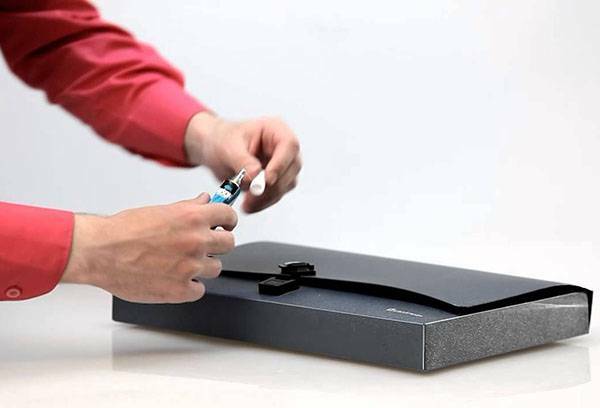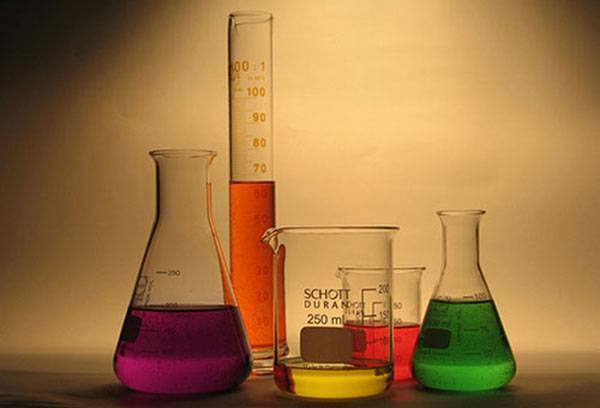Contents:
- Which glue should I use?
- Epoxy or polyurethane adhesive
- Solvent-based adhesives or solvents themselves
- Determine the type of plastic
- Proceed to gluing
It's a shame when a favorite thing is made of plastic, and it failed to withstand the load and broke. Throwing the arm does not rise, and making the seam welded at home is not so easy. I want to find something, than to glue plastic firmly, that's just obvious that this time the super glue can not be dispensed with: the product is used often, constantly undergoing loads, so it needs to be glued as much as possible and more accurately. So which glue should I choose for such a job?

Which glue should I use?
To begin with it is necessary to determine what glue will be more expedient to glue plastic parts, and the choice is, in fact, small: relatively simple, convenient, but not too hard or more complex, but tight.
Epoxy or polyurethane glue
These types of glue can glue any type of plastic among themselves, as well as plastic with other materials, which is extremely convenient, especially if you do not know and do not want to know anything about the compatibility of types of plastics and solvents. Use such glue is more difficult than the usual "Moment", but if the needlewomen are able to cope with it, fastening parts of the jewelry, then you will also have to mix the two-component glue in the required proportion according to the instruction.
These types of glue seem to cling to the plastic surface of both pieces that you want to glue, so the strength of the gluing is not so high: under heavy loads, intensive exploitation or temperature drops, this seam will lose much in the fortress, so those who need to glue parts together tightly, we do not recommend this method.
If you decide that this gluing is sufficient, then sand the surface of both parts slightly to improve adhesion of the glue, wash them, dry and degrease. Then mix the glue and glue the surfaces. Epoxy adhesive dries about half a day, and completely dries out more than 24 hours, so it's important to fix the glued parts and do not expose the product to the load in the first 1-2 days after gluing.
Important!
When mixing epoxy glue components, be very careful about the proportions and do not mix them by eye. If the surface to be glued is not large, you may need to use a syringe.

Solvent-based adhesives or solvents themselves
If such a flaky gluing does not suit you, glue based on solvents that come into contact with the plastic in the reaction, dissolving it, will help to glue the plastic together, and when it dries they provide an extremely strong adhesion. The process of gluing itself is not complicated, but you will have to prepare yourself beforehand, sorting out the types of plastics: different types of solvents are suitable for different types, at the same time there are a lot of such solvents, so that compatibility is better or more precise on the Internet, or consult the consultant in the store whereyou will buy glue.
But to understand what type of plastic you are dealing with, you still have to, if you do not want to carry the product to the store for inspection by a consultant and especially if you are going to independently choose a solvent. So finding a label will be your first step.

Determine the type of plastic
All the produced products from plastic are marked, so if you carefully inspect the product, you will for sure find either a triangle of arrows, or a kind of quotes with an abbreviation or a number. This is the type of plastic for which you need to choose a solvent. There are many types, we list the most popular groups.
- Polyethylene and polypropylene ( 2, 4, 5, HDPE, LDPE, PP, UMHW).If you have ever tried to glue a cellophane bag, you know that this is a terrible thing. These types of plastics really do not lend themselves to bonding, and although some manufacturers produce special adhesives, their effectiveness compared with conventional welding seam is several times lower.
Board
For plexiglass and polystyrene, dichloroethane is a good choice because of its ability to strongly dissolve and firmly bond. But because of its strong virulence, it can not be used to glue dishes and some other things that you often close to.
- Polystyrene ( 6, PS).This type of plastic is very common and, fortunately, it is well bonded with a lot of adhesives: from epoxy to glue based on cyanoacrylate, which is an ester - one of the best solvents for polystyrene. Also, amyl benzene, benzene, toluene, tetrahydrofuran or cyclohexane can be used as the solvent.
Council
For gluing polystyrene with other materials, it is better to choose glues on bitumen or polyacrylates.
- Acrylonitrile butadiene styrene ( 7.9, ABS).This plastic is imported in overwhelming volume, and is also used in imported goods: models, designers and even cartridges for 3D printers. It only soldered it is better than glued. With its dissolution, problems can arise: it is durable, and you can try to dissolve it, perhaps, only with dichloroethane. In this case, just a solvent will be small and will have to prepare the glue.
Advice
The adhesion with solvents is stronger and more accurate, as it is carried out only due to the material to be glued and does not involve the use of foreign substances.
Of course, this is not all kinds of plastic, and about the one that you are going to glue together, you will have to read more on the Internet. But as soon as you find the right solvent, the circuit will be the same for all plastics.

Proceed to gluing
For most plastics, simple surface treatment with a solvent may suffice, although if you need to glue tightly for centuries, and in the case of ABS plastic, you will have to make glue.
- Solvent
For bonding with a single solvent, you need to apply it to both surfaces to be bonded, wait a little while the solvent softens the surface layer, tighten them and fix them, and then wait for the complete drying, which is achieved after 1-2 days.
- Solvent based adhesive
For glue, you will need a solvent and shavings of the bonded plastic. The chips are dissolved in an appropriate substance in a proportion of 1: 1 for about 30 minutes, then the resulting homogeneous mass is applied to the parts and glued together, fixing them for the next 24 hours. When the solvent evaporates completely, a strong adhesion is formed at the site of the gluing.
In any of these cases, the surfaces before gluing must be clean, dry and free from grease: after surface treatment, try not to touch it with hands.
If you understand the theory, then in practice, gluing plastic will not be so difficult. The main thing is not too lazy to calculate the type of plastic, pick the right solvent and gently produce gluing together!
